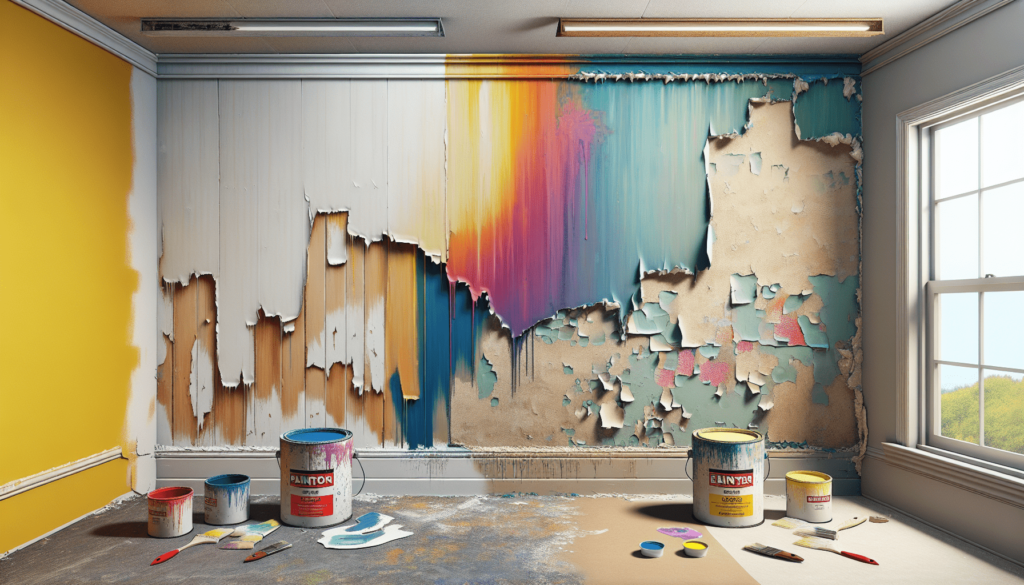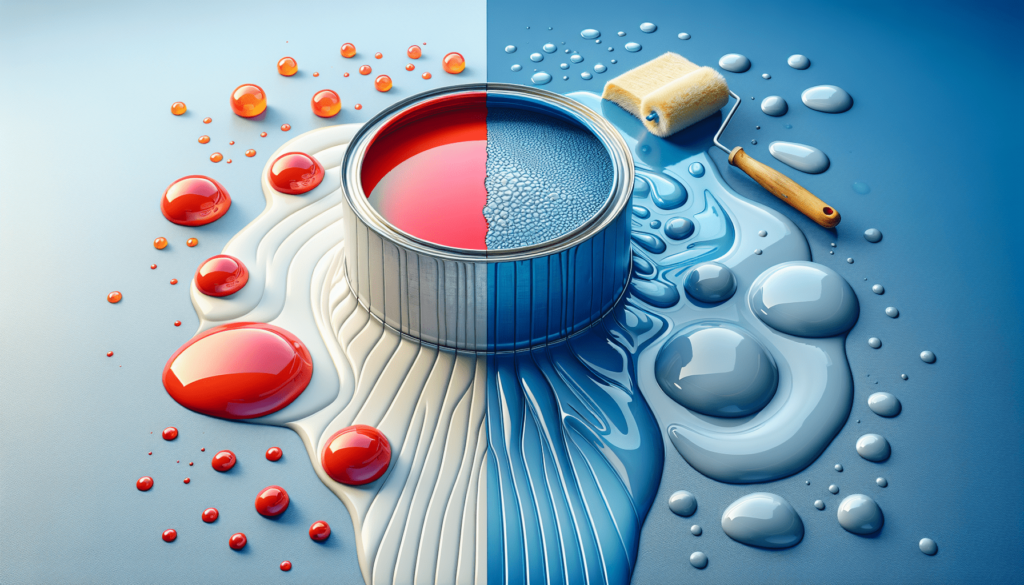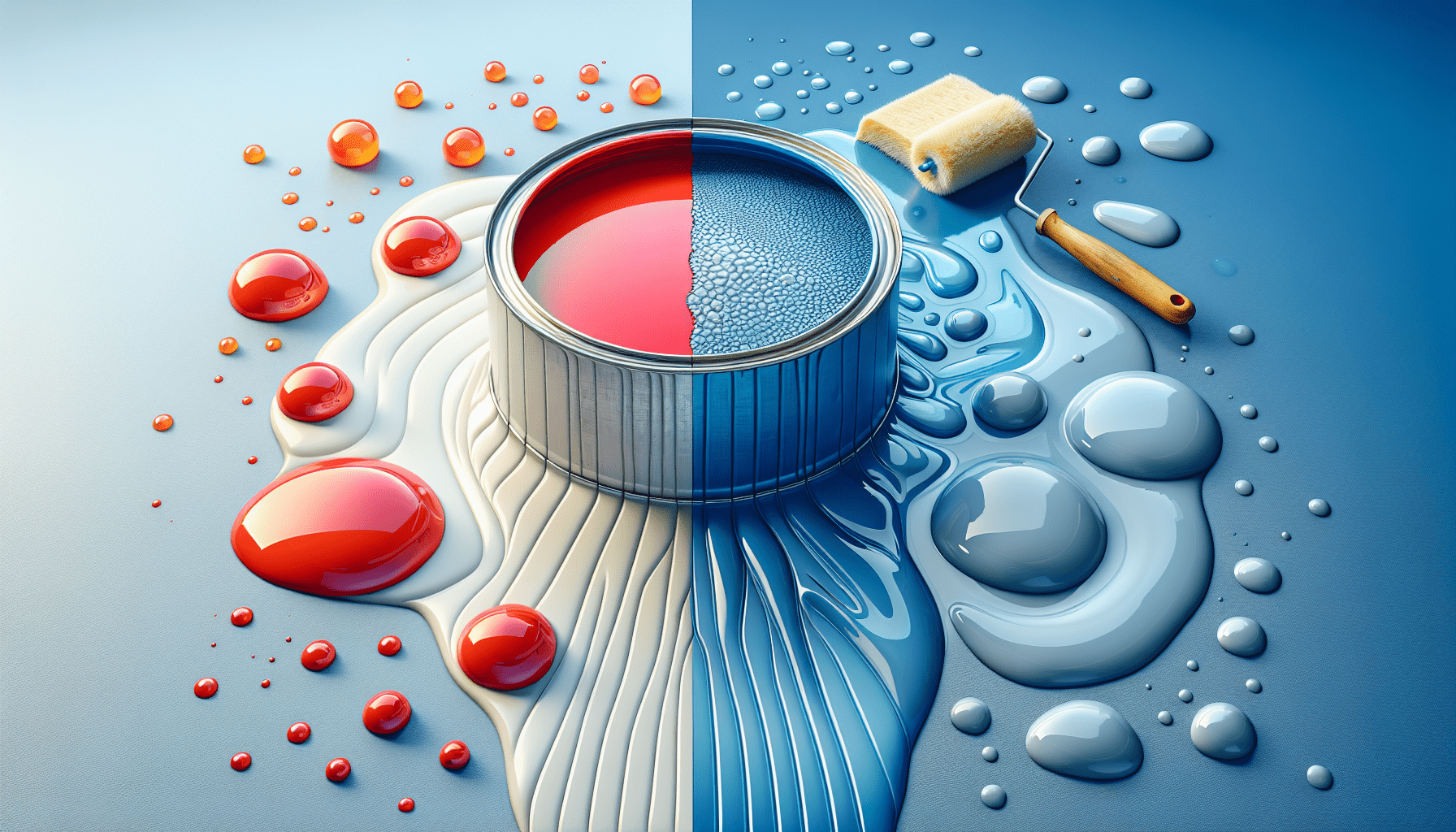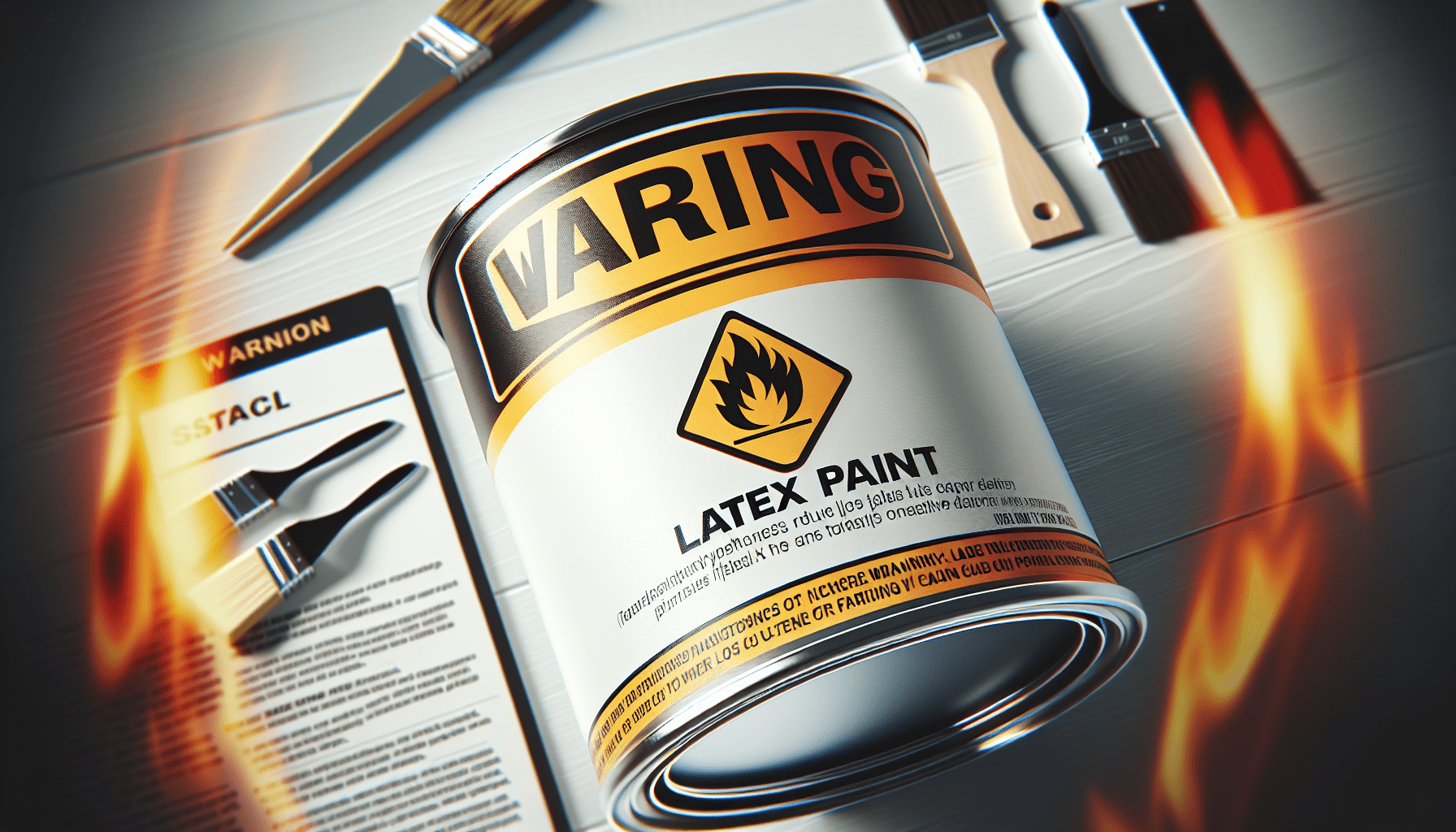When it comes to painting, making the right decisions can make all the difference in achieving a flawless finish. In the realm of paint compatibility, the question often arises: can you paint enamel over latex paint? Whether you’re considering a bold color change or simply refreshing your current walls, understanding the compatibility between enamel and latex paints is essential for a successful paint job. In this article, we will explore the intricacies of painting with enamel over latex paint, discussing the necessary preparations, potential challenges, and the benefits of this approach. So, if you’re looking to elevate your painting skills and transform your space, read on to discover the answer to this query and unlock a world of design possibilities.

Introduction to painting enamel over latex paint
Brief overview of enamel and latex paint
Enamel paint and latex paint are two common types of paint used for various projects. Enamel paint is a durable oil-based paint that provides a glossy finish and is known for its resistance to stains and damages. Latex paint, on the other hand, is a water-based paint that dries quickly and produces a smooth, matte finish. Both types of paint have their own unique properties and applications.
Common uses of enamel and latex paint
Enamel paint is often used for painting surfaces that require durability and protection, such as metal surfaces, cabinets, and trim. It is commonly used in areas that are exposed to moisture or heavy use, as it can withstand wear and tear. Latex paint, on the other hand, is commonly used for interior and exterior walls, ceilings, and other surfaces that do not require as much durability.
Why someone might consider painting enamel over latex paint
There are several reasons why someone might consider painting enamel over latex paint. One common reason is to achieve a high-gloss finish on a surface that has been previously painted with latex paint. Enamel paint provides a smooth, glossy finish that can enhance the appearance of a surface, especially in areas where a durable and stain-resistant finish is desired. Additionally, painting enamel over latex paint can provide added protection to surfaces that are exposed to moisture or heavy use.
Understanding enamel paint
Definition and characteristics of enamel paint
Enamel paint is a type of oil-based paint that contains enamel resin, which gives it its glossy finish and durability. It is known for its smooth application and ability to create a hard, protective coating. Enamel paint can resist stains, scratches, and damages, making it ideal for surfaces that are prone to wear and tear. It also provides a high level of moisture resistance, making it suitable for use in bathrooms and kitchens.
Advantages and disadvantages of enamel paint
Enamel paint offers several advantages. Its high-gloss finish provides a luxurious and professional look to any surface. It also has excellent durability, making it resistant to stains, chipping, and abrasion. Enamel paint is also highly moisture resistant, which makes it ideal for areas that may be exposed to water or humidity. However, one disadvantage of enamel paint is its strong odor and the need for proper ventilation when applying it. It also requires more time for drying and curing compared to latex paint.
Types of enamel paint available
There are different types of enamel paint available, each designed for specific applications. Traditional oil-based enamel paints are commonly used for surfaces that require high durability, such as metal and wood. Water-based enamel paints have been developed as a safer and more environmentally-friendly alternative to oil-based enamel paints. These water-based enamels are easier to clean up, have lower VOC emissions, and dry more quickly.
Understanding latex paint
Definition and characteristics of latex paint
Latex paint, also known as water-based paint, is made from synthetic polymers that are suspended in water. It has become a popular choice because it is easy to use, has low odor, and dries quickly. Latex paint provides a smooth and even finish, making it suitable for both interior and exterior applications. It is also known for its ability to expand and contract with temperature changes, which helps prevent cracking or peeling.
Advantages and disadvantages of latex paint
Latex paint offers several advantages. It is easy to clean up with just soap and water, making it a practical choice for DIY projects. Latex paint also dries quickly, allowing for multiple coats to be applied in a shorter amount of time. It has a low odor compared to oil-based paints, making it more suitable for indoor use. However, latex paint may not be as durable as enamel paint and may not provide the same level of stain resistance and protection against moisture.
Types of latex paint available
There are various types of latex paint available, each formulated for different surfaces and applications. Interior latex paints are designed for use on interior walls, ceilings, and trim and are available in different finishes such as flat, eggshell, and semi-gloss. Exterior latex paints are specially formulated to withstand outdoor conditions and offer enhanced durability. They are available in different finishes such as satin, gloss, and high-gloss.
Can you paint enamel over latex paint?
Factors to consider before painting enamel over latex paint
Before painting enamel over latex paint, it is important to consider a few factors. First, ensure that the latex paint is in good condition and properly adhering to the surface. If the latex paint is peeling or flaking, it is recommended to remove it completely before applying enamel paint. Additionally, consider the desired outcome and the level of durability and sheen you are looking to achieve. Enamel paint will provide a glossy finish and added protection, but it may require additional preparation and steps.
Compatibility between enamel and latex paint
While enamel paint and latex paint are technically compatible, it is important to properly prepare the surface and ensure proper adhesion. Enamel paint is oil-based, while latex paint is water-based, so there can be adhesion issues if the surface is not properly prepared. The key to successful adhesion is to properly clean and prime the latex paint before applying enamel paint.
Potential issues to be aware of
There are potential issues to be aware of when painting enamel over latex paint. If the surface is not properly prepared, the enamel paint may not adhere properly and could peel or chip. Additionally, enamel paint takes longer to dry and cure compared to latex paint, so proper drying and curing time should be allowed. It is also important to note that once enamel paint is applied, it can be challenging to remove or change without proper surface preparation.

Preparation for painting enamel over latex paint
Surface preparation
Proper surface preparation is crucial for achieving a successful enamel paint application over latex paint. Start by cleaning the surface to remove any dirt, grease, or other contaminants. Use a mild detergent and water solution or a degreaser, followed by thorough rinsing and drying. If there are any imperfections or uneven areas, use a suitable filler or putty to smooth them out and sand them down until the surface is even and smooth.
Cleaning and priming
After cleaning and smoothing the surface, it is important to apply a suitable primer. Choose a primer that is compatible with both latex and enamel paints. The primer will help create a strong bond between the latex and enamel paints and improve adhesion. Apply the primer according to the manufacturer’s instructions, ensuring even coverage over the entire surface. Allow the primer to dry completely before proceeding to the next step.
Sanding and smoothing the latex paint
To ensure proper adhesion, it is recommended to lightly sand the latex paint with fine-grit sandpaper before applying enamel paint. This will roughen the surface slightly, allowing the enamel paint to bond more effectively. Take care not to sand too aggressively to avoid damaging the underlying surface. After sanding, wipe down the surface with a clean cloth to remove any dust or debris.
How to paint enamel over latex paint
Choosing the right enamel paint
When painting enamel over latex paint, it is important to choose the right type of enamel paint for the specific application. Consider factors such as the desired sheen level, the level of durability required, and any specific conditions the painted surface may be exposed to. Select a high-quality enamel paint that is compatible with the primer and offers the desired characteristics for the project.
Application techniques for best results
To achieve the best results when painting enamel over latex paint, apply the enamel paint in thin and even coats. Use a high-quality paintbrush or roller for smooth and consistent application. Start by cutting in the edges with a brush, then use a roller to cover the larger areas. Work in small sections to ensure even coverage and avoid visible brush or roller marks. Allow each coat to dry before applying additional coats.
Tools and equipment needed
Before starting the painting process, gather all the necessary tools and equipment. These may include high-quality paintbrushes and rollers, a paint tray, painter’s tape, drop cloths to protect surrounding surfaces, a ladder or step stool (if needed), and appropriate safety equipment such as gloves and goggles. Having all the tools and equipment prepared beforehand will make the painting process smoother and more efficient.
Tips for successful paint application
Testing a small area
Before painting the entire surface, it is always recommended to test the enamel paint on a small, inconspicuous area. This will help ensure that the paint adheres properly and provides the desired finish. Apply a small amount of enamel paint to the test area and allow it to dry and cure according to the manufacturer’s instructions. Inspect the area for any issues such as poor adhesion or uneven coverage before proceeding with the full application.
Using proper ventilation
Enamel paint has a strong odor and can release volatile organic compounds (VOCs) during the drying and curing process. To ensure safety and proper ventilation, open windows and doors and use fans to circulate fresh air while painting. If possible, consider painting in well-ventilated areas or using exhaust fans to remove fumes from the space. Take breaks in between coats to allow fresh air to enter the room.
Applying thin and even coats
To achieve a professional finish, it is essential to apply thin and even coats of enamel paint. Thick or heavy application can lead to drips, sagging, and longer drying times. Follow the manufacturer’s recommendations for the proper application technique and coverage. Applying multiple thin coats will not only ensure even coverage, but it will also promote better adhesion and durability.
Curing and drying time
Understanding the curing process
Enamel paint requires a longer curing time compared to latex paint. The curing process involves the paint film fully hardening and developing its maximum level of durability and resistance. The curing time can vary depending on several factors, including the type of enamel paint, environmental conditions, and the thickness of the paint layers. It is important to allow adequate curing time before subjecting the painted surface to heavy use or cleaning.
Factors that may affect the drying time
Several factors may affect the drying time of enamel paint over latex paint. These include the temperature and humidity levels in the environment, the thickness of the paint layers, and the airflow in the area. Enamel paint dries slower in high humidity and colder temperatures. It is important to follow the manufacturer’s recommendations for drying times and avoid exposing the painted surface to excessive moisture or temperature fluctuations during the drying process.
Maintenance and care for enamel-painted surfaces
Cleaning and upkeep recommendations
Enamel-painted surfaces require specific care and maintenance to ensure their longevity and appearance. For regular cleaning, use mild soap and water to gently clean the surface, avoiding harsh abrasive cleaners that can damage the paint. Avoid scrubbing vigorously to prevent scratching the enamel finish. In areas where stains or scuffs may occur, use a non-abrasive cleaner or mild solvent recommended for enamel paint to remove the marks.
Protective measures to prolong the paint’s lifespan
To prolong the lifespan of enamel-painted surfaces, it is important to take certain protective measures. Use coasters, trivets, and protective pads on surfaces such as countertops and tabletops to prevent scratches or heat damage. Avoid using abrasive cleaning tools or harsh chemicals that can damage the enamel finish. Regularly inspect the painted surface for any signs of wear or damage and address them promptly to prevent further issues.
Seeking professional advice
When to consult a professional painter
While painting enamel over latex paint can be done as a DIY project, there are instances where consulting a professional painter may be beneficial. If the surface to be painted is large or complex, or if there are multiple layers of existing paint that require removal, a professional painter can provide the necessary expertise and equipment. Additionally, if there are underlying structural issues or repairs needed, a professional can address them before the painting process.
Finding a reputable painter
When looking for a reputable painter, consider recommendations from friends, family, or neighbors who have had similar projects done. Research local painting companies and check their reviews and ratings online. Request quotes from multiple painters and compare their prices, qualifications, and warranties. It is also important to ensure that the painter is licensed, insured, and provides a written contract that outlines the scope of work, timeline, and payment terms.
Cost considerations
The cost of painting enamel over latex paint can vary depending on several factors, including the size of the project, the condition of the surface, the type of enamel paint used, and whether it is done as a DIY project or by a professional painter. DIY projects can save on labor costs but may require the purchase of tools, equipment, and materials. Professional painters can provide a more accurate cost estimate based on the specific project requirements. It is recommended to obtain multiple quotes and consider the overall value and quality before making a decision.
In conclusion, painting enamel over latex paint can be a viable option for achieving a glossy and durable finish on various surfaces. Understanding the characteristics and properties of both enamel and latex paint is essential for successful adhesion and desired results. Proper surface preparation, choosing the right materials, and using appropriate application techniques are crucial for a professional finish. Whether you decide to tackle the project yourself or seek professional assistance, careful planning, and attention to detail will ensure a successful outcome.



